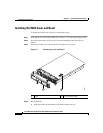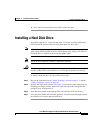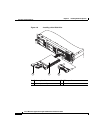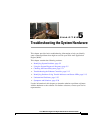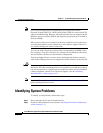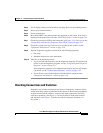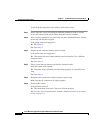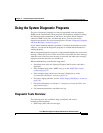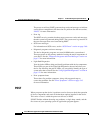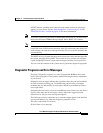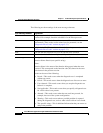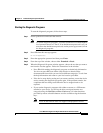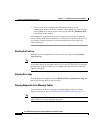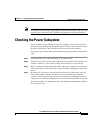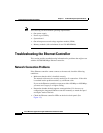
Chapter 5 Troubleshooting the System Hardware
Using the System Diagnostic Programs
5-6
Cisco Wide Area Application Engine 7326 Hardware Installation Guide
OL-6831-02
The power-on self-test (POST) generates beep codes and messages to indicate
successful test completion or the detection of a problem. See the next section,
“POST,” for more information.
• Error log
The POST error log contains the three most recent error codes and messages
that the system has generated during POST. The system error log contains all
the error messages that were issued during POST.
• SCSI error messages
For information on SCSI errors, see the “SCSI Errors” section on page 5-60.
• Diagnostic programs and error messages
The device diagnostic programs are stored in ROM on the system board.
These programs are the primary method of testing the major components of
your device. See the “Diagnostic Programs and Error Messages” section on
page 5-7 for more information.
• Light Path Diagnostics
Your device has LEDs to help you identify problems with device components.
These LEDs are part of the Light Path Diagnostics that are built into your
device. By following the path of LEDs, you can quickly identify the type of
system error that occurred. See the “Using Light Path Diagnostics” section on
page 5-21 for more information.
• Error symptom charts
These charts list problem symptoms, along with suggested steps to
correct the problems. See the “Error Symptoms” section on page 5-43
for more information.
POST
When you power up the device, it performs a series of tests to check the operation
of device components and some of the hardware options installed in the device.
This series of tests is called the power-on self-test, or POST.
If POST finishes without detecting any problems, a single beep sounds, and the
first screen of your operating system or application program appears.



